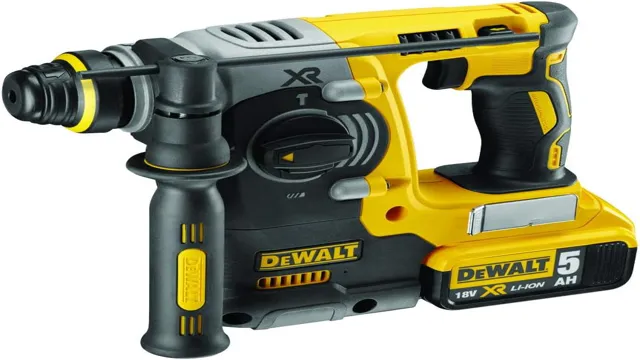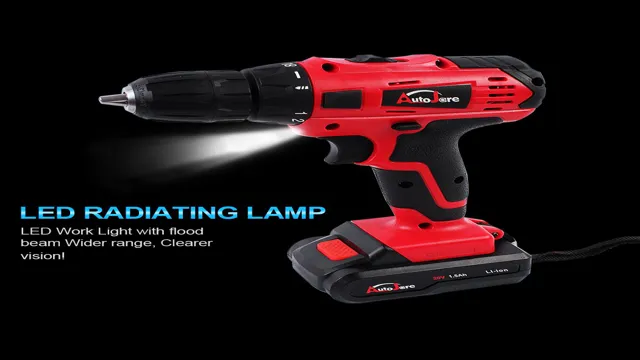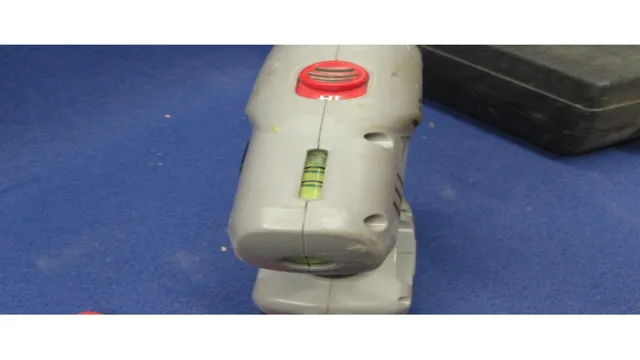What should I do about bad batteries for cordless drill: An ultimate guide to revive or replace?

If you’re a DIY enthusiast or tradesperson who uses a cordless drill regularly, you know how frustrating it is when the battery suddenly dies during a project. It’s a common problem, but that doesn’t mean you have to let it ruin your day—or your tool. There are several steps you can take to deal with bad batteries and get your cordless drill back up and running.
First, it’s important to understand what causes batteries to go bad. Over time, the cells in your battery can become damaged or worn down, reducing its overall capacity and ability to hold a charge. High temperatures, overcharging, and leaving the battery unused for extended periods can all contribute to this wear and tear.
Fortunately, there are a few steps you can take to extend the life of your batteries and keep them running smoothly. By properly charging and storing your batteries, avoiding overcharging, and replacing them when necessary, you can ensure that your cordless drill is always ready to go when you are. In this blog, we’ll take a closer look at some of the common issues that can arise with cordless drill batteries, and provide you with some practical tips and tricks for maintaining and replacing your batteries as needed.
Whether you’re a seasoned DIY pro or just starting out, the information in this blog can help you keep your tools working effectively for years to come.
Understanding Battery Life and Failure
If you’re experiencing bad batteries for your cordless drill, the first thing you should do is assess the battery life and determine if it’s reaching its end of life. Understanding battery failure is crucial to prevent further problems with your cordless drill. One reason for battery failure is overcharging, which can damage the cells and reduce the battery’s lifespan.
Another problem is high temperatures, which can cause the battery to overheat and deteriorate quickly. If the battery isn’t making a good connection with the drill, it may not be able to provide enough power to operate the tool. To resolve the problem, you can try cleaning the contacts with a soft cloth and see if that improves the connection.
Sometimes, buying a new battery is the best solution. When purchasing a new battery, make sure it’s compatible with your cordless drill, and check the specifications to ensure it meets your needs. Investing in a high-quality battery will save you money and time in the long run.
Remember to recycle your old batteries responsibly to limit environmental damage.
Factors that Affect Battery Life
Battery life is an essential factor in our digital world. Understanding the factors that affect battery life and failure can help us stay connected and productive on the go. One of the most significant factors that affect battery life is usage.
The more you use your device, the faster the battery will drain. Another factor that affects battery life is temperature. High temperatures can damage batteries over time and reduce their lifespan.
It’s essential to keep devices out of direct sunlight and avoid using them for extended periods in hot environments. Other factors that can impact battery life include maintenance, age, and charging habits. To ensure your battery lasts as long as possible and avoid unexpected failures, it’s essential to take care of your devices and follow manufacturer guidelines for maintenance and charging.
Taking a few simple steps can help ensure your device’s battery lasts longer, so you can stay connected and productive wherever you go.

Signs of Battery Failure
Battery failure can be a frustrating experience, especially when it unexpectedly happens. Understanding the life cycle of your battery and recognizing signs of failure can help you prevent issues. The average battery has a lifespan of about three to five years, but this can be affected by factors such as usage, temperature, and maintenance.
Signs of battery failure may include slow engine cranking, dim headlights, and a warning light on your dashboard. It’s essential to regularly check your battery and schedule maintenance to prevent unexpected failure. Think of your battery like a plant that needs proper care and attention to thrive.
By being proactive, you can ensure your battery lasts as long as possible and avoids the inconvenience of unexpected failure.
You May Also Love:
Steps to Take When Dealing with Bad Batteries
If you’re dealing with bad batteries for your cordless drill, there are a few steps you can take to address the issue. First, check to see if the battery is still under warranty. If it is, contact the manufacturer to see if they can replace or repair it for you.
If not, consider trying to revive the battery by charging it and using it until it fully discharges, then charging it again. Alternatively, if the battery is beyond repair, you’ll need to replace it. Make sure to purchase a replacement battery that matches the voltage and amperage of your drill.
Finally, to prevent future battery issues, make sure to properly store and maintain your batteries according to the manufacturer’s instructions. With these steps, you can keep your cordless drill working smoothly and efficiently.
Proper Battery Maintenance
Proper Battery Maintenance As technology advances, we rely more and more on batteries to power our devices. From our phones to our cars, batteries play a vital role in our everyday lives. However, batteries can become damaged or wear out over time, leading to decreased performance and even failure.
That’s why it’s essential to properly maintain your batteries to ensure they last as long as possible. One key step is to avoid overcharging your batteries, as this can cause them to overheat and potentially become a fire hazard. Additionally, regularly checking and cleaning the battery terminals can prevent corrosion, which can also impact battery performance.
By taking these simple steps, you can help to prolong your batteries’ life and get the most out of your devices.
Consider Battery Replacement
If you’re dealing with a bad battery, it may be time to consider a battery replacement. But before you rush out to buy a brand new battery, there are a few steps you should take. First, make sure the battery is the problem by performing a battery test.
This will give you an accurate reading on the battery’s condition and help you decide whether a replacement is necessary. Second, check the battery’s warranty. If the battery is still under warranty, you may be able to get a replacement for free.
Finally, if you do need to replace the battery, make sure you choose a high-quality replacement. Cheaper batteries may seem like a good deal, but they’re more likely to fail again in the future. By taking these steps, you can ensure that you get the best possible performance from your replacement battery.
Recycling Old Batteries
When it comes to dealing with old batteries, it’s important to handle them correctly to avoid any environmental damage and potential harm to yourself. The first step is to determine if the battery is actually dead or just needs to be recharged. If it’s dead, do not throw it in the trash, as it can release toxic chemicals into the landfill.
Instead, bring it to a proper recycling facility or contact your local government to learn about any hazardous waste collection programs. It’s also important to store old batteries in a dry, cool place until you can dispose of them properly. Taking these steps will not only protect the environment but also ensure your safety and the safety of others.
Choosing the Right Replacement Battery
If you’re experiencing bad batteries for your cordless drill, it may be time to consider getting a replacement. But with so many options available, how can you choose the right one? First, consider the brand and model of your drill as some batteries may only be compatible with certain models. Next, think about the type of battery you need.
Lithium-ion batteries tend to last longer and have a higher power output, but they can be more expensive. Nickel-cadmium batteries are cheaper but may have a shorter lifespan. It’s important to also check the voltage and capacity of the battery to ensure it’s suitable for your needs.
Don’t forget to also consider the warranty and customer reviews before making your final decision. With the right replacement battery, you can get your cordless drill back to top performance in no time.
Types of Replacement Batteries
Choosing the right replacement battery can be overwhelming, especially when there are so many types available in the market. To decide which one is best for your needs, you must first identify the device you want to replace the battery for. Some devices require a specific type of battery, while others can use a variety of options.
Common replacement battery types include alkaline, nickel-cadmium (Ni-Cad), lithium-ion (Li-Ion), nickel-metal hydride (NiMH), and lead-acid batteries. Alkaline batteries are the most common and are suitable for low-drain devices, while Ni-Cad and NiMH batteries are rechargeable and better for high-drain devices. Li-Ion batteries have a longer lifespan and are ideal for high-performance devices, while lead-acid batteries are heavy-duty and commonly used in cars.
Determining which replacement battery type is the right fit for your device will ensure long-lasting performance and prevent damage.
Compatibility with Your Cordless Drills
When it comes to compatibility with your cordless drills, it’s important to choose the right replacement battery. Not all batteries are compatible with all drills, so it’s important to do your research before making a purchase. Some factors to consider include the voltage of your battery and the type of battery chemistry that your drill uses.
For example, nickel-cadmium and lithium-ion batteries are both popular choices, but they’re not always interchangeable. It’s also important to consider the capacity of your battery and the brand and model of your drill. By taking all of these factors into account, you can choose a replacement battery that will work seamlessly with your cordless drill and provide you with reliable power for all of your DIY projects.
Conclusion
When it comes to bad batteries for your cordless drill, there are a few possible solutions. You could try to revive them with a battery charger or replace them with new ones altogether. But let’s be real, if your batteries are in a sorry state, maybe it’s time to evaluate your life choices – are you really using that drill as much as you thought you would? Perhaps it’s time to embrace the joys of manual labor and the satisfaction of hand tools.
Or, you know, you could just hire a professional and forget about all this battery drama.”
FAQs
What are the common reasons for bad batteries in cordless drills?
The common reasons for bad batteries in cordless drills include overcharging, undercharging, and exposure to extreme temperatures.
Can bad batteries damage a cordless drill?
Yes, bad batteries can damage a cordless drill by causing reduced power output and difficulties in starting the tool.
How to diagnose bad batteries in a cordless drill?
You can diagnose bad batteries in a cordless drill by testing the battery voltage, checking for signs of damage or corrosion, and observing the overall performance of the tool.
How to improve the lifespan of cordless drill batteries?
To improve the lifespan of cordless drill batteries, avoid overcharging, store the batteries in a cool, dry place, and use the tool regularly to prevent deep discharge.
Should I repair or replace a bad battery for my cordless drill?
It depends on the severity of the damage and the cost of repair. In most cases, it is more cost-effective to replace the battery rather than repairing it.
What are the main types of cordless drill batteries?
The main types of cordless drill batteries are nickel-cadmium (Ni-Cd), nickel-metal hydride (NiMH), and lithium-ion (Li-ion).
How long do cordless drill batteries typically last?
Cordless drill batteries typically last between 2 to 5 years, depending on usage, storage conditions and the quality of the battery.



